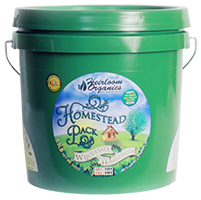|
Home > Guides > Vegetables > Eggplant |
|
How to Grow Eggplant | Guide to Growing Eggplant |
|
|
|
|
| |
|
|
| |
|
| |
Overview Dramatic foliage and colorful fruits (white, green and other colors in addition to the usual deep purple) make this heat-loving annual a good choice for ornamental beds as well as vegetable gardens. Needs two or more months with night-time temperatures in the 70s F for good fruit production. |
|
| |
|
|
| |
|
|
| |
|
|
|
|
|
|
|
|
|
Well Drained, High Fertility |
|
|
|
|
|
|
|
|
|
|
|
|
Growing Guide
GROWING NOTES
Prefers fertile, well-drained, slightly acid soil that is high in organic matter for best growth and yield, but tolerates a broader range of soil types. Has moderate moisture needs.
Tender annual.
Requires fertile soil and a long, warm growing season.
Relatively inconspicuous, curling down and hidden within foliage.
MAINTAINING
Start inside about 6 weeks before last frost date (or about 8 weeks before expected transplanting). Plant 1/4 inch deep in flats or cell-type containers. Keep soil warm (about 80 F to 90 F if possible) until emergence. Eggplant will not germinate in cool soil.
Harden off plants carefully before transplanting by reducing temperature and water.
Wait until weather has settled, all chance of frost has passed and soil is in the 60s F before transplanting, perhaps 2 to 3 weeks after the average last frost date. Cool conditions can weaken plants. Frost will kill them.
Consider using raised beds or black plastic mulch to warm soil and speed early-season growth. If using organic mulches to help retain moisture, do not apply until the soil has warmed.
Set transplants 18 to 24 inches apart in rows 30 to 36 inches apart.
Use row covers to protect plants from pests.
If season is cool, fruit set may be inconsistent. Plants with heavy fruit set benefit from staking.
Eggplants are heavy feeders, but avoid high-nitrogen fertilizers. They may encourage lush foliage growth at the expense of fruit.
Pinch off blossoms 2 to 4 weeks before first expected frost so that plants channel energy into ripening existing fruit, not producing new ones.
To help reduce disease, do not plant eggplants or other tomato-family crops in the same location more than once every three or four years.
|
|
| |
|
| |
Heirloom seeds are the gardeners choice for seed-saving from year-to-year. Learning to save seeds is easy and fun with these books. Before you harvest, consider which varieties you might want to save seeds from so that your harvesting practice includes plants chosen for seed saving. Be sure to check out our newest seed packs, available now from Heirloom Organics. The Super Food Garden is the most nutrient dense garden you can build and everything you need is right here in one pack. The Genesis Garden s a very popular Bible Garden collection. The Three Sisters Garden was the first example of companion planting in Native American culture. See all of our brand-new seed pack offerings in our store.
|
|
| |
|
|
| |
Harvesting Guide
HARVESTING
Harvest plants after they develop color, but before they lose their shine. Seeds on over-ripe fruit turn brown.Check for maturity by pushing on one side of the fruit with the ball of the thumb. If the fruit does not spring back when released, it is mature. Cut the stem with pruning shears and leave some stem on the fruit.
SAVING SEEDS
Cut open a ripe and shriveling eggplant and cube it into pieces about thumb size. Place the cubes in a colander over a pan and sprinkle with some kitchen salt. Toss the cubes to coat evenly with the salt and begin mashing and squeezing them with your hands. This removes much water from the cubes, it will also releases the seeds from the flesh.
Rinse the seeds off the cubes and they'll slip through the colander into the catching pan. Immature seeds will float atop the water. Pour off the floating seeds and any loose bits of eggplant flesh, add more water and stir again to separate the good from the bad. Repeat this step as needed.
Use a small kitchen strainer to sieve the seeds from the water, rinse them well to remove any salt. Spread the seeds in a single layer on a coffee filter for drying. They should dry for at least two or three days, about a week or longer if the weather is damp.
|
|
| |
|
|
|
| |
|
|
|
|
|
| You can find this variety in the following Seed Packs: |
|
   |
|
| Click the packs below to see some of our other wonderful products |
|
|
|
|
|
|
|